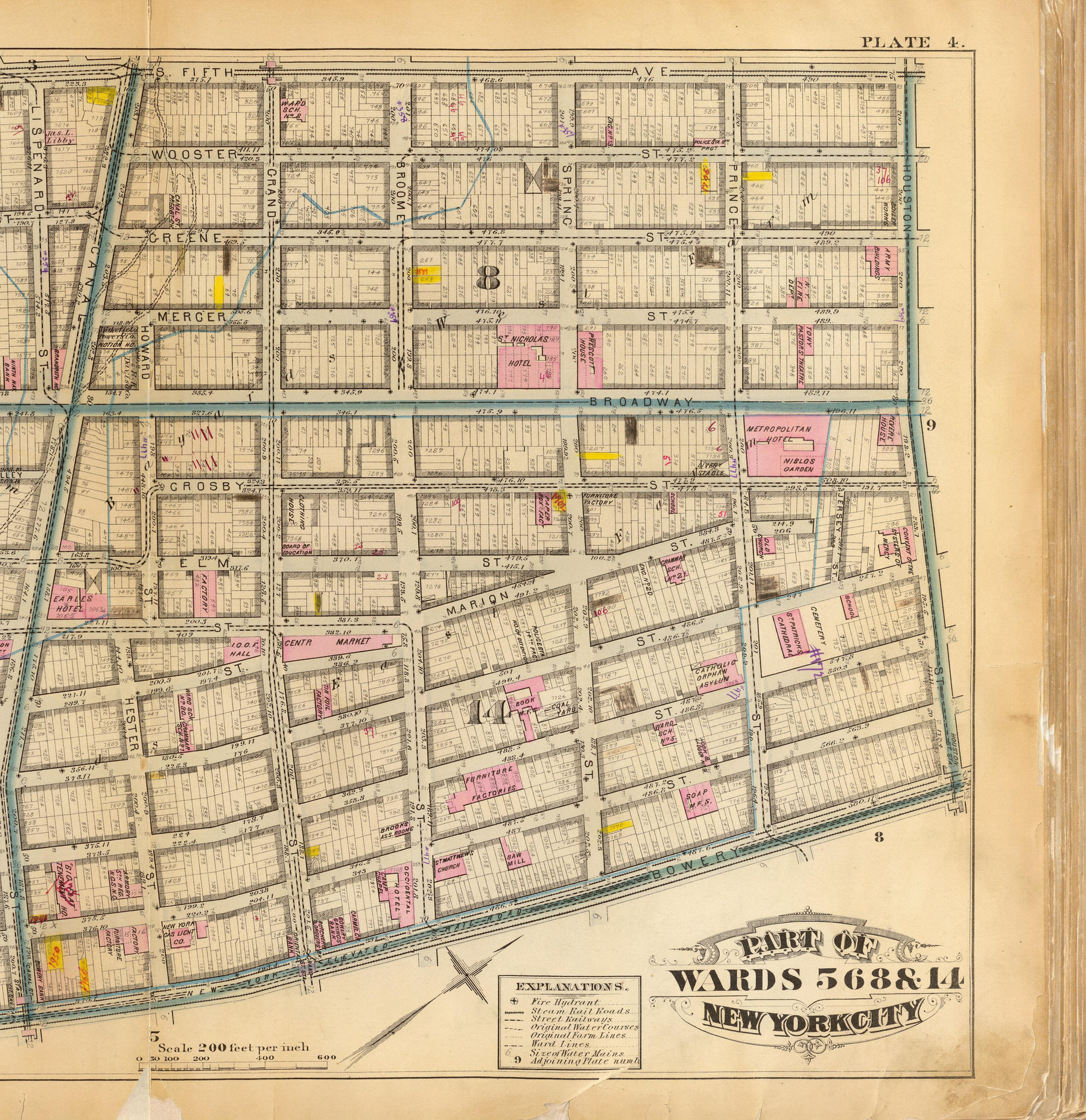In 1870, there were 14 brothels on Greene Street.
The brothels moved to Greene after hotels and large theaters started to cluster nearby, including the Olympic Theatre at Broadway and Houston. The Greene Street block, just off Broadway, was conveniently full of houses with many bedrooms — and Greene Street soon had the highest concentration of sex-work activity in New York City.
Olympic Theatre at 624 Broadway, 1875. Ephemeral New York
The shows were often meant to be titillating, and patrons regularly went to the brothels after performances.
"Interior of Niblo's Opera House, New York City." New York Public Library Digital Collections
"Annabelle Dances and Dances," found on YouTube. A version also at New York Public Library Digital Collections, Jerome Robbins Dance Division.
Zoom to map
Part of wards 5, 6, 8 & 14, New York City. (G.W. Bromley & Co., civil engineers. Published by Geo. W. Bromley & E. Robinson, 1879). Data from Gilfoyle, Timothy. City of Eros: New York City, Prostitution, and the Commercialization of Sex, 1790- 1920 WW Norton & Company: New York, 1994.

Drawing, entitled "The Genius of Advertising," in National Police Gazette, 1880. New York Times.
Found in New York Times.


1880 Federal Census records
Name
Age
Occupation: "none" for the young women
listed as employee, boarder ("bdr"), or servant

Greene Street became the center of a thriving sex trade.
"Health Officers Clearing Out a Dive," in Under-ground life in New York, C. S. Reinhart. Harper's Weekly, 1873 July 12, p. 604. Found in Library of Congress
